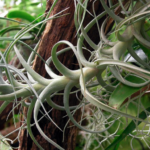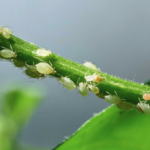Decoding the Signs of Pest Damage in Trees
Trees are vital components of our environment, providing shade, oxygen, and beauty to our surroundings. Unfortunately, just like any living organism, trees are susceptible to various pests that can cause significant damage if left unchecked. Identifying the signs of pest damage in trees is crucial for their timely protection and preservation. In this article, we will explore the common indicators of pest infestation and provide guidance on how to detect and address these issues effectively.
Visual Clues:

When inspecting trees for pest damage, keep an eye out for visible signs that indicate the presence of pests. These may include:
- Discolored Leaves: Observe the foliage closely. If you notice yellowing, browning, or wilting leaves, it could be a sign of an infestation.
- Unusual Leaf Loss: Premature leaf drop or thinning canopy, especially during non-dormant periods, can be indicative of a pest problem.
- Bark Damage: Look for cracks, splits, or peeling bark. These can be evidence of pests like borers or wood-boring insects.
- Gall Formation: Pests such as mites or wasps often cause abnormal growths on leaves or stems called galls. These are typically round or lumpy formations and can range in color from green to brown.
Physical Evidence:
Examining the tree for physical signs of pests is crucial in determining the nature of the infestation. Look for:
- Holes: Small holes in the bark or wood may indicate the presence of wood-boring insects, such as beetles or carpenter ants.
- Sawdust or Frass: Piles of fine sawdust or excrement near the base of the tree can signify the activity of boring insects or caterpillars.
- Webs or Silk: Spider mites or certain caterpillars create silk webs on tree branches or leaves. These webs can be seen particularly during warm and dry weather.
- Insect Presence: Look closely for crawling or flying insects on the tree, as their presence is an obvious sign of infestation.
Tree Decline and Disruption:
Pest damage can weaken trees, leading to overall decline and altered growth patterns. Watch out for:
- Stunted Growth: If a tree shows limited or stunted growth despite favorable conditions, it may be due to pests attacking its roots or feeding on vital nutrients.
- Dieback: Notice if specific branches or sections of the tree are dying or appear withered. This might indicate pest activity in those areas.
- Suckering or Sprouting: When trees experience stress, they may respond by producing suckers or sprouts near the base or lower trunk. This can be a result of pest damage or disease.
Early detection and intervention are vital in managing and minimizing the damage caused by pests in trees. By keeping a keen eye on visual clues, physical evidence, and changes in tree health, you can identify potential infestations and take appropriate action. Regular tree inspections, coupled with proper pest management techniques, can help preserve the beauty and health of your trees, ensuring they continue to thrive for years to come. Remember, when it comes to pests and trees, prevention and early intervention are key.




